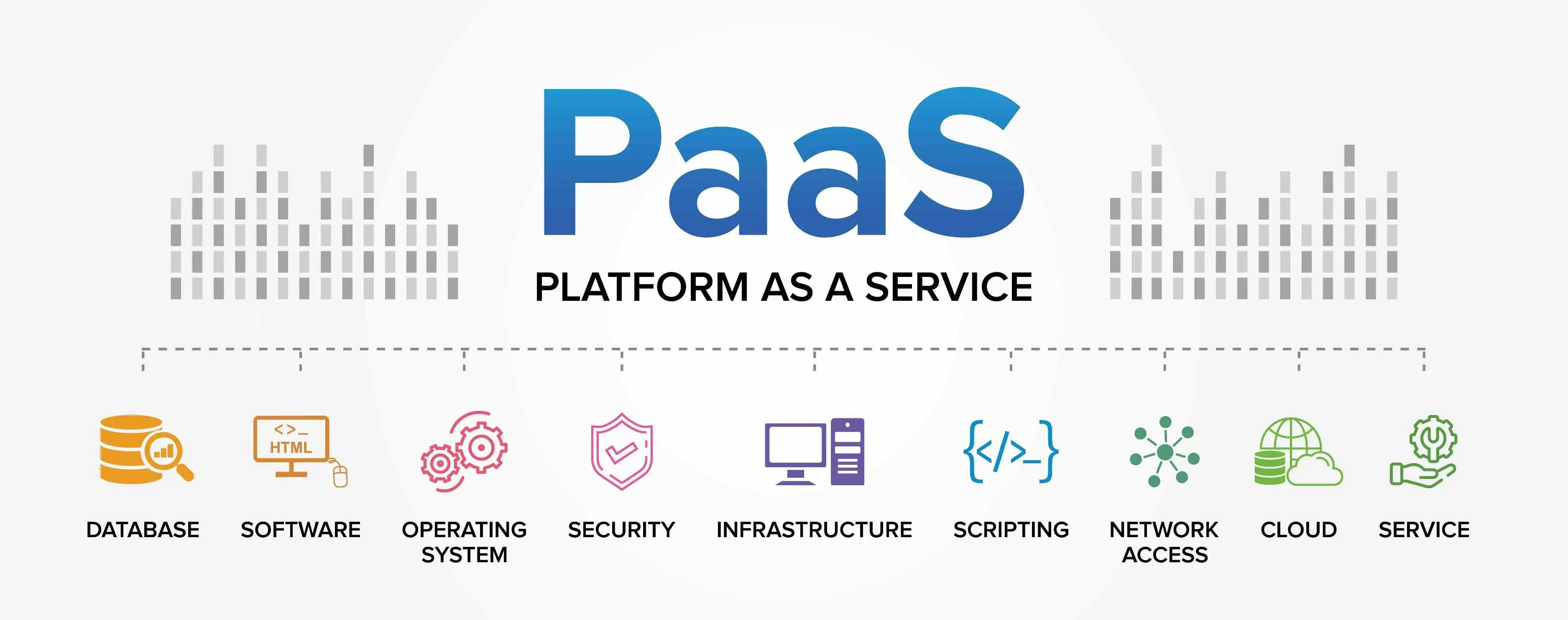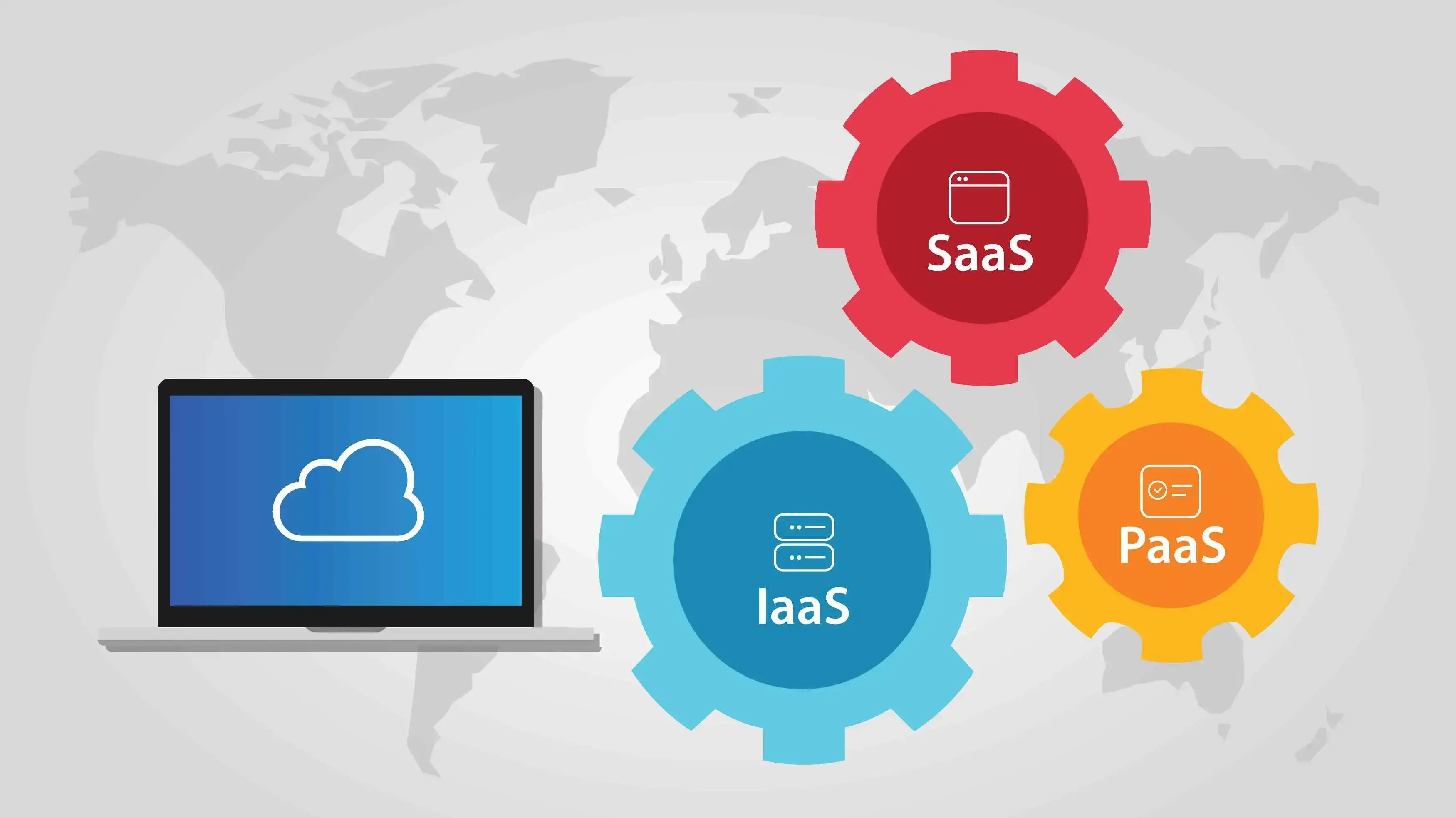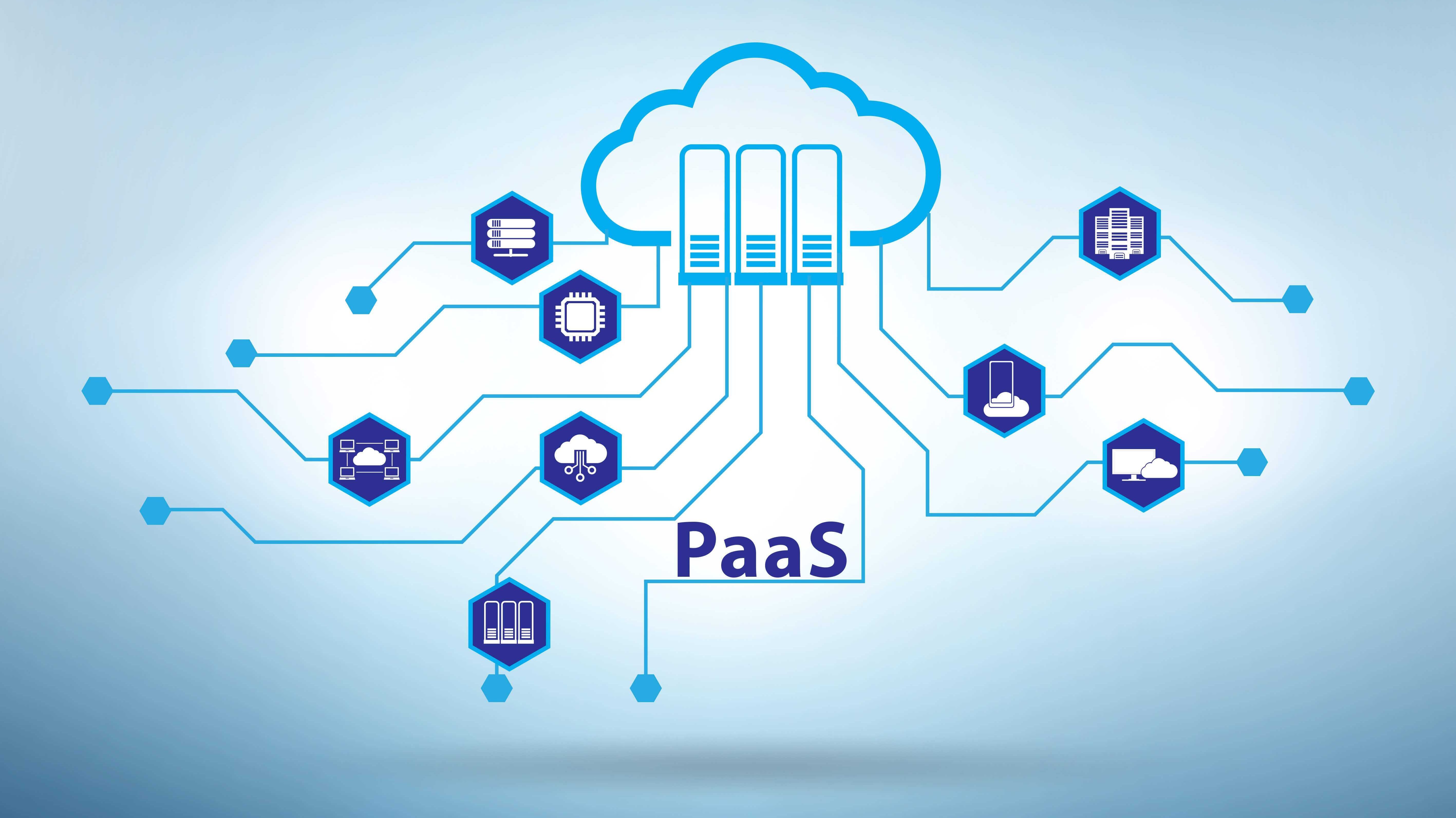Cloud computing has revolutionized technology, with a staggering 61% of businesses migrating their workloads to the cloud in 2020 alone.
As part of this digital transformation, services like PaaS have surged, drawing in many users and businesses.
With its market projected to reach $164.3 billion by 2026, let's get into this popular service to understand more about what it offers and how it can benefit your business.
What Is PaaS?

PaaS, or Platform-as-a-Service, is a Cloud computing that offers hardware and software over the Internet.
It gives users platforms such as an OS and database for application development, while the provider hosts the necessary hardware and software.
How Does PaaS Work?
PaaS provides users with a hosted infrastructure for software development, accessible primarily through a web browser and available in public, private, or hybrid cloud forms.
- Delivers essential platforms like OS, database, and web server.
- Includes tools and software for application development and a GUI for developer collaboration.
- Users manage their applications and data, while providers maintain data centers and servers.
Benefits and Drawbacks of PaaS
Benefits
Drawbacks
Benefits of PaaS
Efficient deployment
PaaS speeds up app deployment; no need to download or install hardware/software.
Users access PaaS through a cloud provider and can immediately start working on their app.
Access to various resources at lower prices
PaaS vendors offer various resources for app development, like operating systems, middleware, and databases.
Development tools and more are available in one place at an affordable price
Freedom to test and experiment at lower risk
Users can test and experiment with new operating systems and languages using PaaS solutions without major purchases.
No need for significant investment in related infrastructure.
Offers simple and affordable scalability
PaaS offers a flexible and economical approach to scaling, avoiding the common pitfalls of traditional on-premise platforms.
Users can purchase additional capacity or features on-demand.
Cheaper than on-premise platforms, which require upfront investment in computing, storage, and network capacity.
On-premise solutions can lead to unused resources during low traffic and inability to scale quickly during traffic surges.
Easy access and flexibility
PaaS allows development teams to easily access necessary tools from anywhere, offering a shared environment that simplifies collaboration and project work.
Overhead Cost Savings
PaaS reduces overhead costs by eliminating the need for capital investment in infrastructure and reducing software licensing and management expenses.
Avoids upfront costs of developing and scaling an application platform.
Lowers or eliminates software licensing fees.
Reduces application management expenses by managing patches, updates, and other administrative tasks.
Drawbacks of PaaS
Switching your PaaS provider can be challenging
Changing your PaaS vendor is not easy as your app is built with tools unique to your current platform.
Providers vary in supported languages, libraries, APIs, architecture, and operating systems.
Switching often requires rebuilding or heavily modifying the application.
Total dependence on service provider
Businesses often rely heavily on their PaaS provider due to change complexities.
Small changes by the provider can greatly affect application performance.
Changes in the provider's pricing can significantly increase operating costs
Security and compliance
Navigating PaaS security and compliance is complex, as providers typically manage both data storage and code hosting.
Providers store application data and host code, sometimes using IaaS.
Despite enhanced security measures, it's hard to fully examine and test provider security.
Certifying compliance for businesses with strict data security standards can delay market entry.
Examples of PaaS
- AWS Elastic Beanstalk
- Microsoft Azure App Service
- Heroku
- Force.com
- Google App Engine
- Apache Stratos
- OpenShift
- IBM Cloud Foundry
- SAP Cloud
- Dokku
- Apprenda Cloud Platforms
- Pivotal Cloud Foundry
- Salesforce Lightning
- Oracle Cloud Platform
- Zoho Creator
- Wasabi
- Cloudways
- LongJump
- DigitalOcean App Platform
Other Types of Cloud Service

Saas
Software-as-a-Service (SaaS) provides applications over the Internet, with the cloud service provider handling all hardware and software.
Examples include Google Workspace, Salesforce, and Slack.
IaaS
Infrastructure-as-a-Service (IaaS) offers on-demand access to physical and virtual servers and resources.
Examples include DigitalOcean Droplets, Microsoft Azure Storage, and Google Compute Engine.
SaaS Vs. PaaS: Key Differences
SaaS provides complete software for immediate use, like customer data management, requiring no extra programming.
PaaS offers a platform to build and deploy custom applications, less inclusive than SaaS.
With SaaS, providers manage everything; users only handle data created by the app.
To use SaaS, you simply log in from any internet-connected device; the provider handles the rest.
PaaS requires developing a custom application or modifying open-source software to utilize its tools.
IaaS Vs. PaaS: Key Differences
IaaS provides hardware-related cloud computing services, such as virtual machines and scalable storage.
PaaS offers platforms for building and deploying applications, expanding on IaaS. With IaaS, you get more control over operating systems, while PaaS offers ease and flexibility.
IaaS replicates traditional cloud infrastructure management, while PaaS supports developers in building custom cloud-based applications.
IaaS is the base for creating cloud services like websites and software, whereas PaaS allows developers to create applications without hosting responsibilities
Who Should Consider Using PaaS
- PaaS is ideal for developers collaborating on projects, offering streamlined procedures and enhancing speed and flexibility.
- PaaS is great for building custom applications, providing all necessary development tools, with users managing only applications and data.
- Those requiring fast hosting, extensive scalability, and easy deployment, without the hassle of additional setup.
- Developers focusing on coding and app innovation, preferring to avoid server management.
- Anyone aiming for rapid app development and deployment while minimizing costs and technical complexities.
Key Services in PaaS Ecosystem

DBaaS: A cloud-hosted database offering storage, computing, and relational capabilities, supporting various databases like NoSQL and MySQL.
IoT Platforms: Embeds items like cars and appliances with sensors to connect and exchange data over the Internet.
APIs: Detailed mobile services like SMS APIs for integrating automated messages into applications.
Push Notification APIs: Similar to SMS APIs, but send notifications to browsers and mobile devices.
Machine Learning: Platforms for creating models to navigate large databases and scale computing power as needed.
MWaaS: Malware-as-a-Service connects front-end client demands with back-end functions.
iPaaS: Integrates workloads and applications that typically don't interoperate.
Types of PaaS
Public PaaS – most suitable for the public cloud
Private PaaS – can work on all types of infrastructures
Hybrid PaaS – a mix of public and private PaaS
Communications PaaS – allows adding real-time communications on applications
Mobile PaaS – used for configuration of mobile applications
OpenPaaS – free, open-source platform suitable for all devices
Customizing PaaS for Your Business Needs
Every business has unique needs and goals, and customizing your Platform-as-a-Service (PaaS) can significantly enhance your organization's productivity and efficiency.
Tailoring a PaaS solution ensures it aligns perfectly with your business operations, scalability requirements, and long-term objectives.
Understand your business requirements
Before customizing your PaaS, carefully examine your business needs.
Identify vital applications, expected load, scalability, and industry-specific compliance, security, and data requirements. This understanding will direct effective customization.
Selecting the right PaaS provider
Choose a PaaS provider that matches your business needs, offering the right flexibility, tools, and services.
Consider integration with current tools, service range, security, and customer support. The ideal provider should ease customization.
Customizing application development tools
PaaS's main benefit is customizing tools and environments.
Opt for a PaaS that supports your team's preferred languages, frameworks, and tools to accelerate development, minimize learning, and boost efficiency.
Integrating with existing systems
Integrating your PaaS solution is crucial for getting the most out of it.
Make sure the PaaS you pick works well with your current databases, CRM systems, and other software. This may require APIs, middleware, or special connectors.
Scalability and flexibility
As your business grows, your PaaS should adapt with it.
Choose a PaaS that easily scales to meet higher demands without disrupting service.
Flexible service plans, resource management, and geographic options are essential for expansion.
Continuous monitoring and support
- Target continuous monitoring of your customized PaaS for optimal performance.
- Pick a PaaS with thorough monitoring tools for real-time tracking of usage, performance, and security.
- Ensure reliable customer support is available for quick issue resolution.
PaaS Vs. Serverless Architecture
PaaS and serverless architecture are revolutionizing the way businesses deploy and manage applications.
Let’s quickly review how they interact and complement each other.
PaaS provides a complete development and deployment environment in the cloud, while serverless focuses on running application code without managing servers.
PaaS offers comprehensive tools and services for development, whereas serverless excels in scaling and cost-efficiency for specific functions.
Both PaaS and serverless simplify the deployment process. PaaS offers a full-stack environment, while serverless automatically handles the scaling and provisioning of resources.
Serverless can be more cost-effective for sporadic tasks due to its pay-per-use model, while PaaS provides predictable costs for ongoing application development.
PaaS allows for the customization of the development environment and can scale as needed, whereas serverless architecture automatically scales with the application's demand.
Many PaaS providers support serverless capabilities, allowing developers to choose the most efficient approach for each task within the same ecosystem.
Conclusion
PaaS stands out as an efficient solution for computing and data management. It streamlines application development and deployment, accelerating market readiness.
By offering platforms accessible through web browsers, PaaS providers manage the underlying hardware and software complexities.
For those seeking to build custom applications without the hassle of server management, PaaS is an ideal choice.
Frequently Asked Questions
Why should I try a managed cloud server?
We’d highly recommend using a managed service, especially if you don’t have the technical skills to run a website. It might cost a little extra, but it certainly takes the stress out of site management.
How easy is it to increase bandwidth on cloud servers?
Incredibly easy. Since you’re in a pool of other servers you can draw on those resources at any time. If you need to increase your bandwidth or storage limits just give us a call and it can be done instantly.
Will cloud hosted websites be backed up?
Yes, Verpex performs daily backups of all sites hosted.
Do I need technical knowledge to use cloud hosting?
Not necessarily. Under a fully managed hosting package Verpex will take care of all the technical aspects for you.
Is Netflis a SaaS?
Yes, Netflix qualifies as a SaaS company as it's a cloud-based service accessible anywhere with internet and operates on a subscription model, where users pay monthly or annually for access.
How do people use cloud computing?
Cloud storage allows you to access data from anywhere at any time, as long as you have an internet connection, freeing you from being restricted to a specific location or device.

I've been navigating the web hosting waters for years now. As the Chief Editor at Verpex, I team up with some awesome writers to dish out the good stuff on hosting. Got a Master's in Journalism, so I always have an eye out for quality. Whether you're just dipping your toes or you're a seasoned surfer, I'm here to make everything web hosting feel like a breeze
View all posts by Julia Lozanov



















